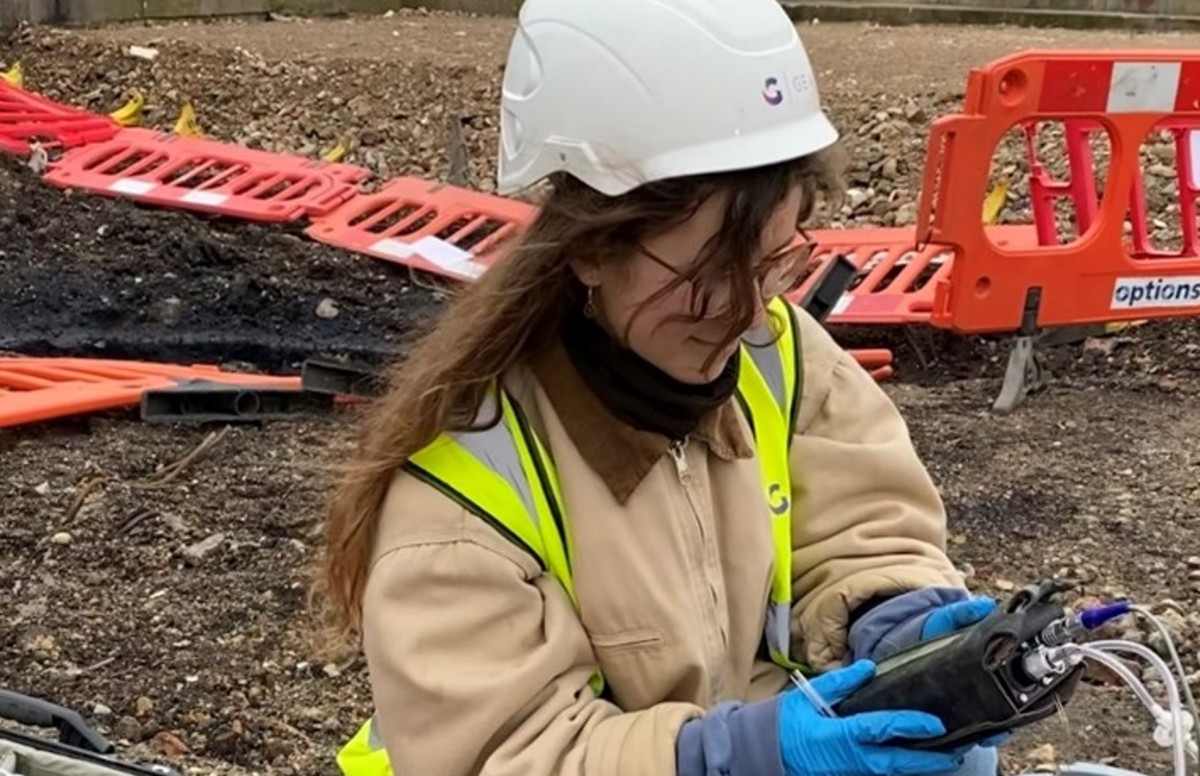The Of Geotheta
The Of Geotheta
Blog Article
The 9-Second Trick For Geotheta
Table of ContentsThe Single Strategy To Use For GeothetaGetting The Geotheta To WorkExcitement About GeothetaThe Only Guide for Geotheta
They work together with civil engineers, structural engineers, engineers, and various other specialists to incorporate geotechnical considerations into the overall task layout and building and construction procedure. This needs effective teamwork, sychronisation, and interaction to make certain that the geotechnical aspects align with the project purposes and fulfill governing needs.Mining & Materials Design: Concepts of boring, penetration prices, and aspects impacting the option of drilling approach. Attributes of dynamites, firing systems and blast patterns. Blowing up strategies in surface and underground operations. Special blowing up strategies at excavation boundaries. Vibration and sound control. Mechanical and constant approaches to fragmentation, consisting of longwall shearing and fullface boring.
Modelling of piece and bit dimension distributions; comminution as a transfer feature. Comminution technology: crushing, grinding, size category. Integrated analysis of fragmentation and comminution procedures. Provided by: Mining & Products Engineering.
9 Easy Facts About Geotheta Shown
Bachelor's level programs in civil, geotechnical, geological, and ecological engineering normally last four years and include general education programs in English, social science, and the liberal arts, along with courses in advanced mathematics, structural geology, and fluid mineralogy. (https://www.merchantcircle.com/blogs/geotheta-miami-fl/2024/8/Why-Geotechnical-Engineers-at-Geotheta-Are-Your-Best-Bet/2781881)
Geotechnical engineering entails the assessment of the dirt and rock conditions at a specific website, and their implications for the advancement of that website. As most structures depend on the ground for support, it is without shock that a detailed understanding of the ground conditions, and the viability of structure systems, are important to the lasting security and performance of the building or structure.
Being experts in the examination of geological developments and ground behaviour, geotechnical engineers perform scientific investigations and testing to recognize the influence these geological developments might have on the style and building and construction of structure, civil and infrastructure jobs. This proficiency is important for the layout and building and construction of buildings, roads, passages, dams, bridges, and water supply and sewer system.
The geotechnical team at Douglas Partners regularly talk to designers, style designers, programmers, and building contractors to make referrals on design and development proposals to ensure that the built structures are suitably designed for the ground conditions. For instance, the design of footing systems needs to consider the weight of the structure, the ability of the ground to sustain that weight with each other with activity resistances and reliable building.
Geotheta - Truths
This task is greatly streamlined by the use of our Douglas Map geospatial system which makes this information conveniently available in a very easy to use web browser interface. A geotechnical engineer will route the boring of boreholes and test pits to accumulate soil and various other samples, and likewise evaluate surface area functions and ground direct exposures to form a geotechnical version of the subsurface conditions.
Depending on the task kind and ground conditions ran into, lab screening may to name a few points analyze strength, compressibility, reactivity and/or leaks in the structure of soil and rock examples. Hereafter data is gathered and looked at, the results are utilized for a geotechnical version of the site, which is commonly presented as areas throughout the website.

A geotechnical description examination by nature can only examine the ground problems at the areas pierced or excavated. Natural variations in dirt and rock problems can take place across a website and between examination areas. It is as a result excellent method that the geotechnical engineer be preserved throughout construction of the task to supply on-site confirmation that the ground problems encountered are consistent with the expectations and guidance supplied in the geotechnical investigation report.
3 Simple Techniques For Geotheta
Geotechnical engineers use their thorough expertise of soil and rock to assess risk and solve troubles on diverse framework projectsGeotechnical design is a specialist branch of civil engineering which takes a look at the behaviour of planet products and the application of soil and rock mechanics. Tailings Engineer. As a geotechnical engineer, you will certainly examine the physical, mechanical and chemical residential properties of soil and rock in order to make structures, retaining frameworks and earthworks
Geotechnical engineering is very closely linked to and overlaps with, both design geology and ground engineering - https://fliphtml5.com/homepage/bdjcx/geotheta/. It's feasible to specialise in geotechnics or benefit a geotechnical company yet be called a design geologist or a ground engineer. As a geotechnical designer, you'll require to: develop and maintain partnerships with customers and various other specialists associated with the site, throughout each projectmaintain safety and security criteria on site bear in mind cost ramifications when you make recommendationsstudy geological maps and aerial photographs from a variety of resources and from different time periodsexamine construction intends to see just how possible they are based upon your understanding of the siteinvestigate dangers or geological risks for the sitesearch for environmentally delicate functions, such as landfill begin to develop valid and interpretive ground modelsplan area investigationsdrill and analyse samples of bedrock, soil, groundwater and additional products supervise various other experts on sitesolve technical problems as they arise, such as unanticipated structures at drill sitesmonitor problems during and after building and construction to make certain structures are steady in the brief and long termadding information collected on website to your preliminary researchcreating geotechnical calculations, drawings, and two or three-dimensional computer system versions interpreting the datamaking suggestions about the suggested use the site

Report this page